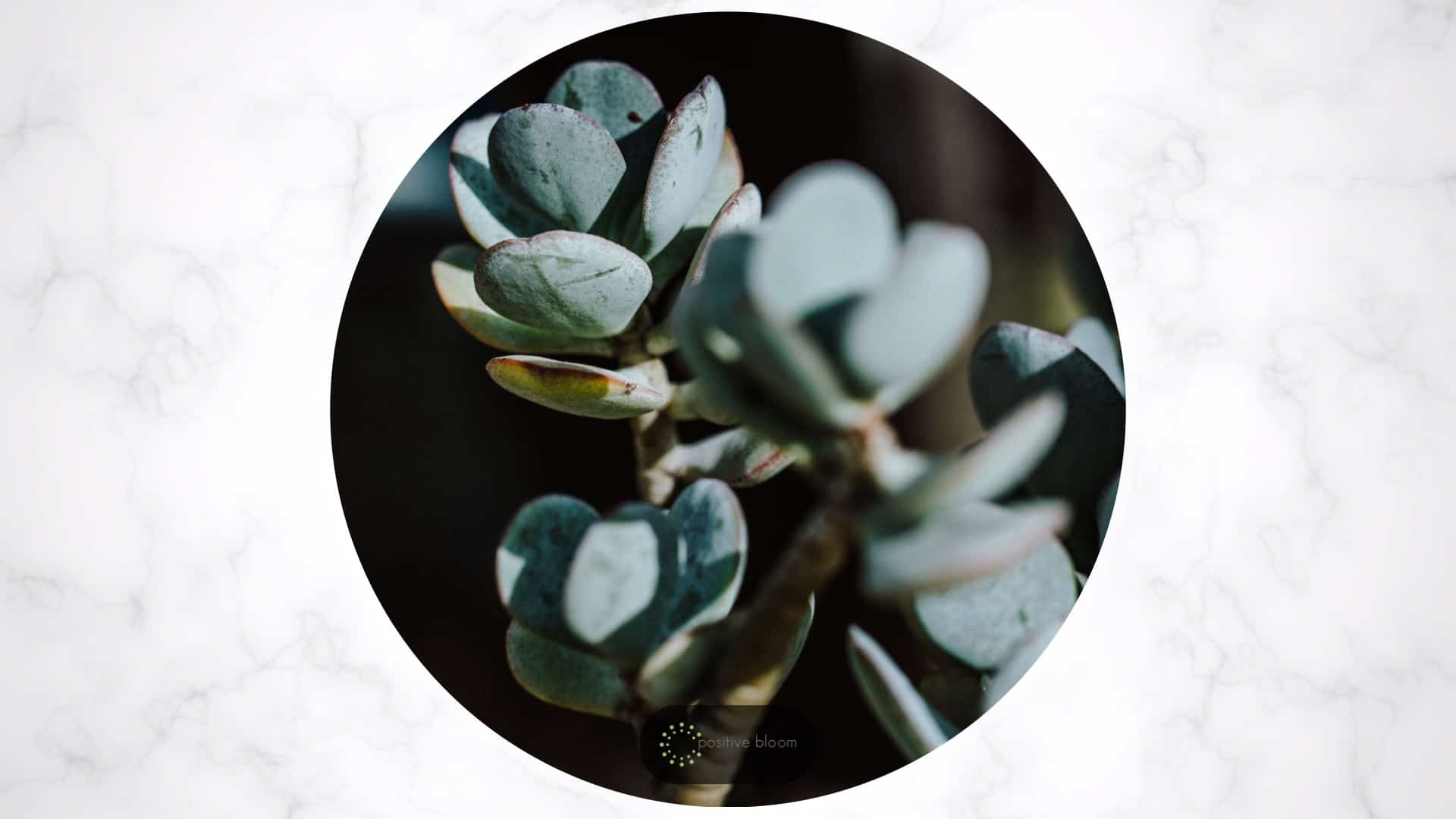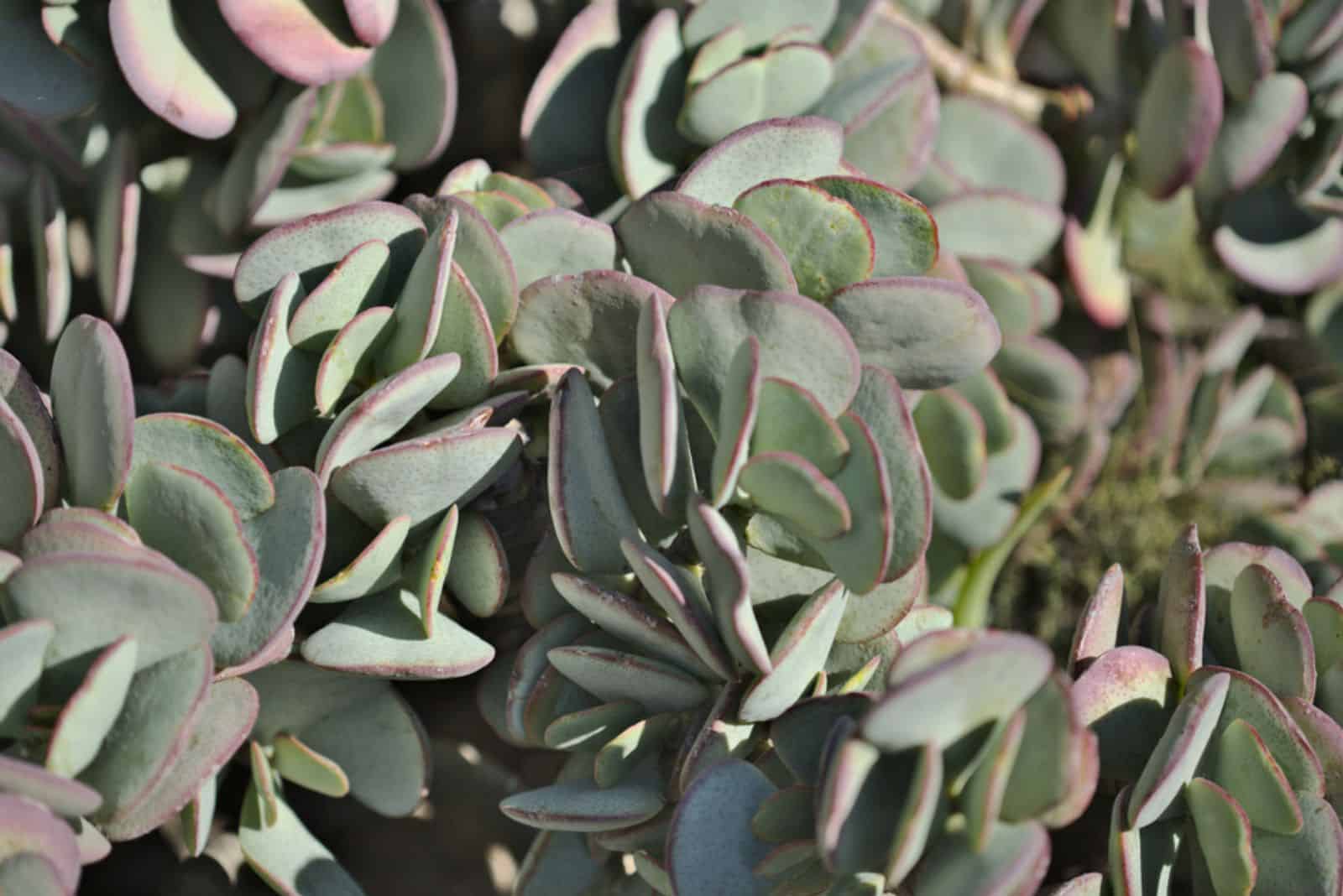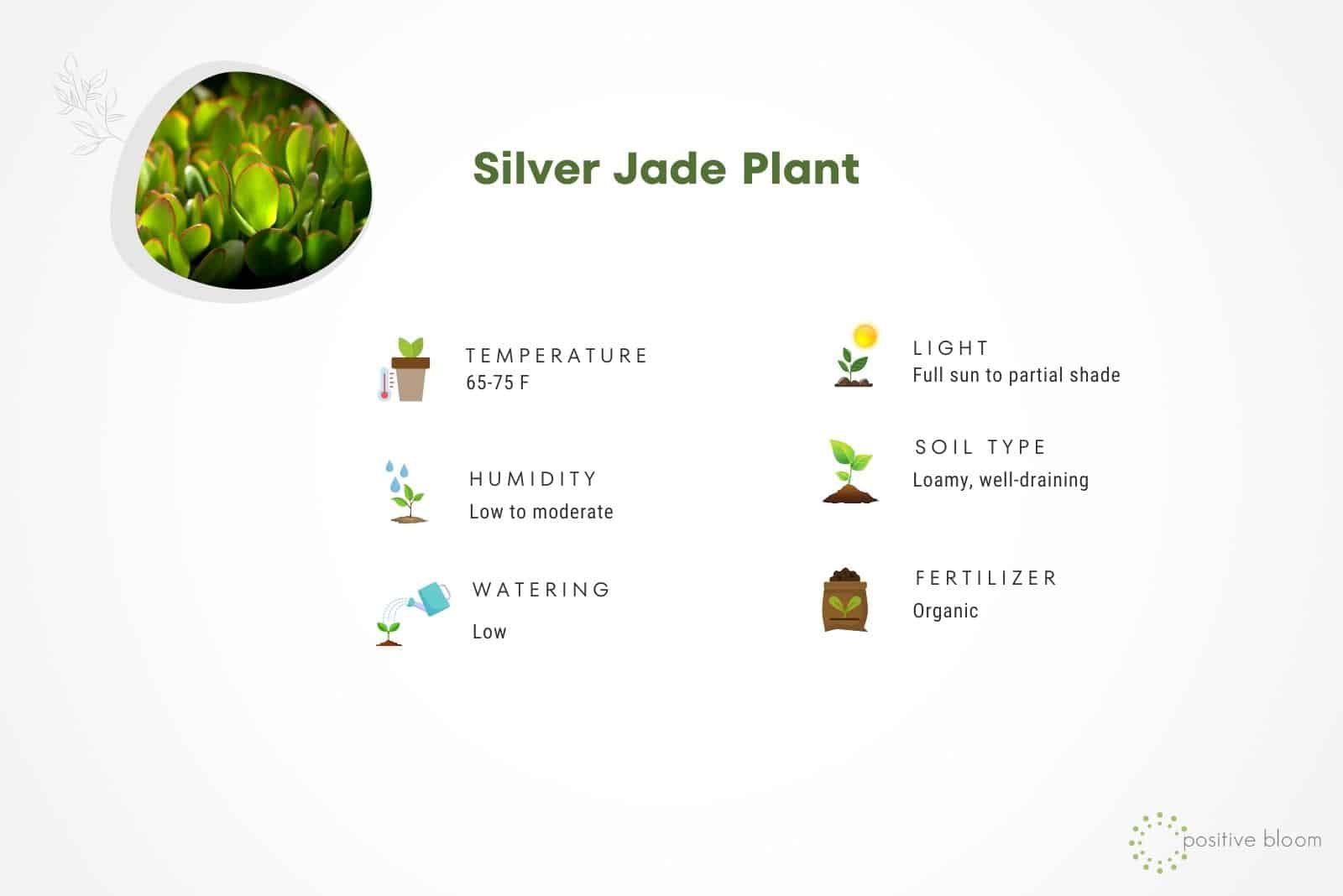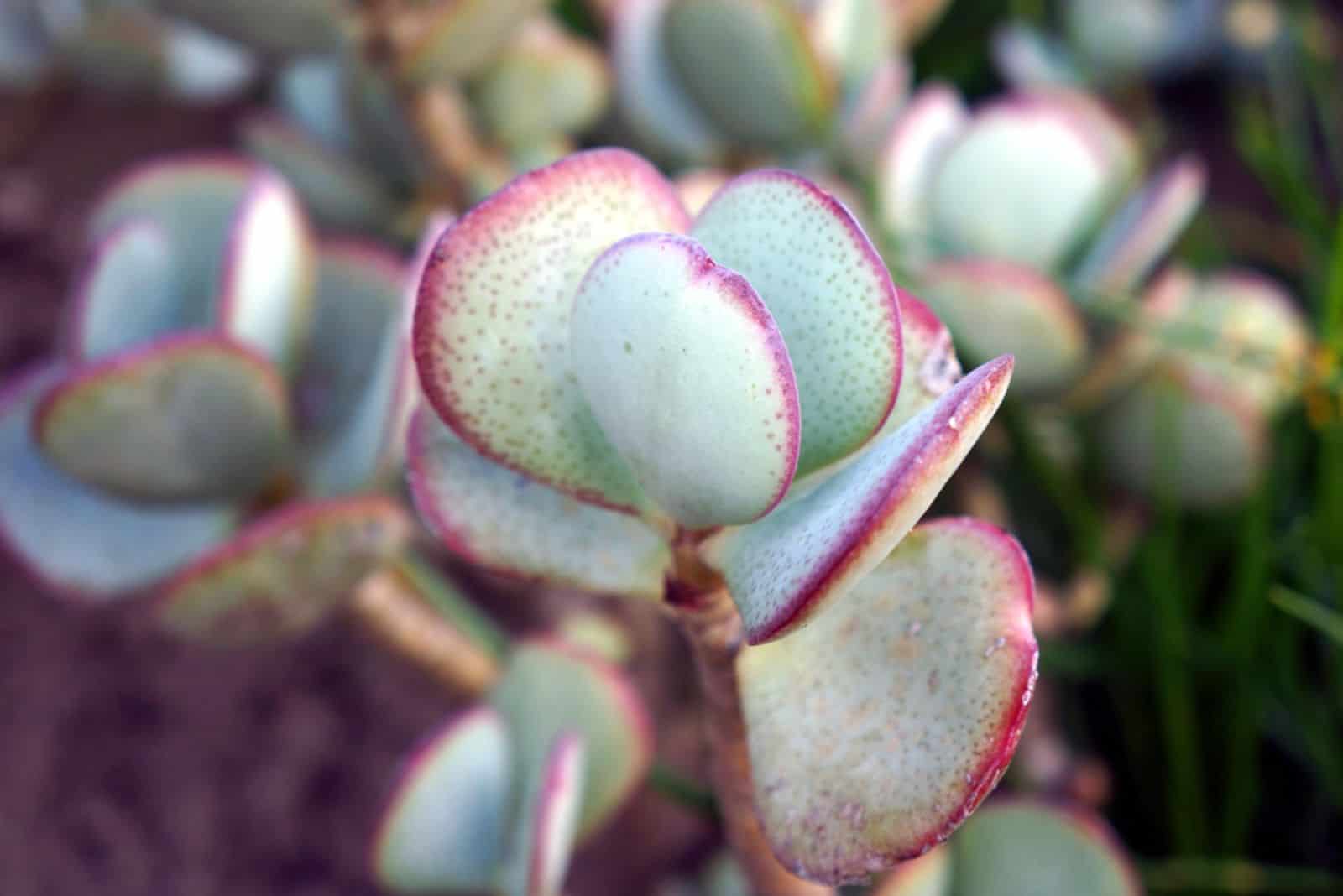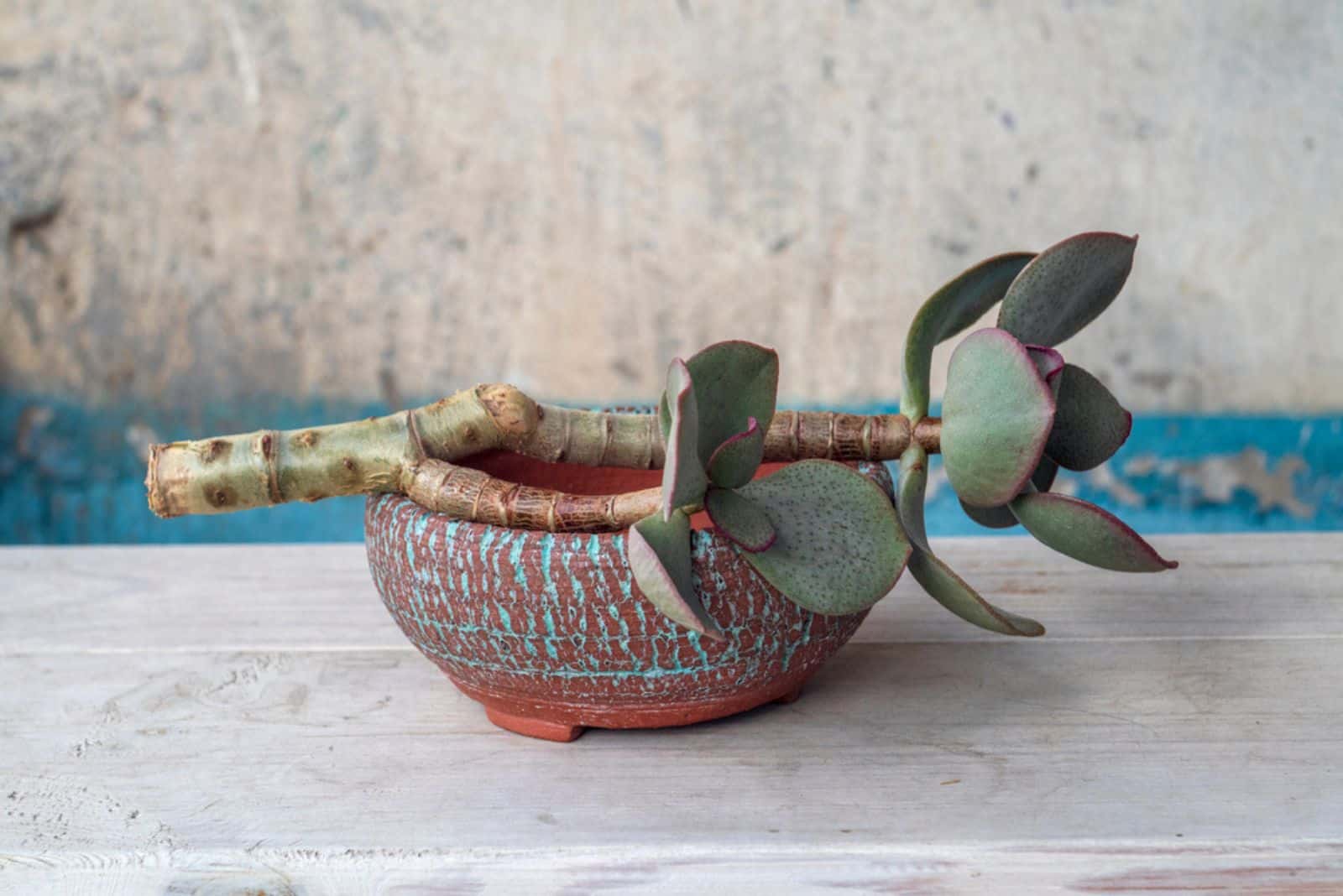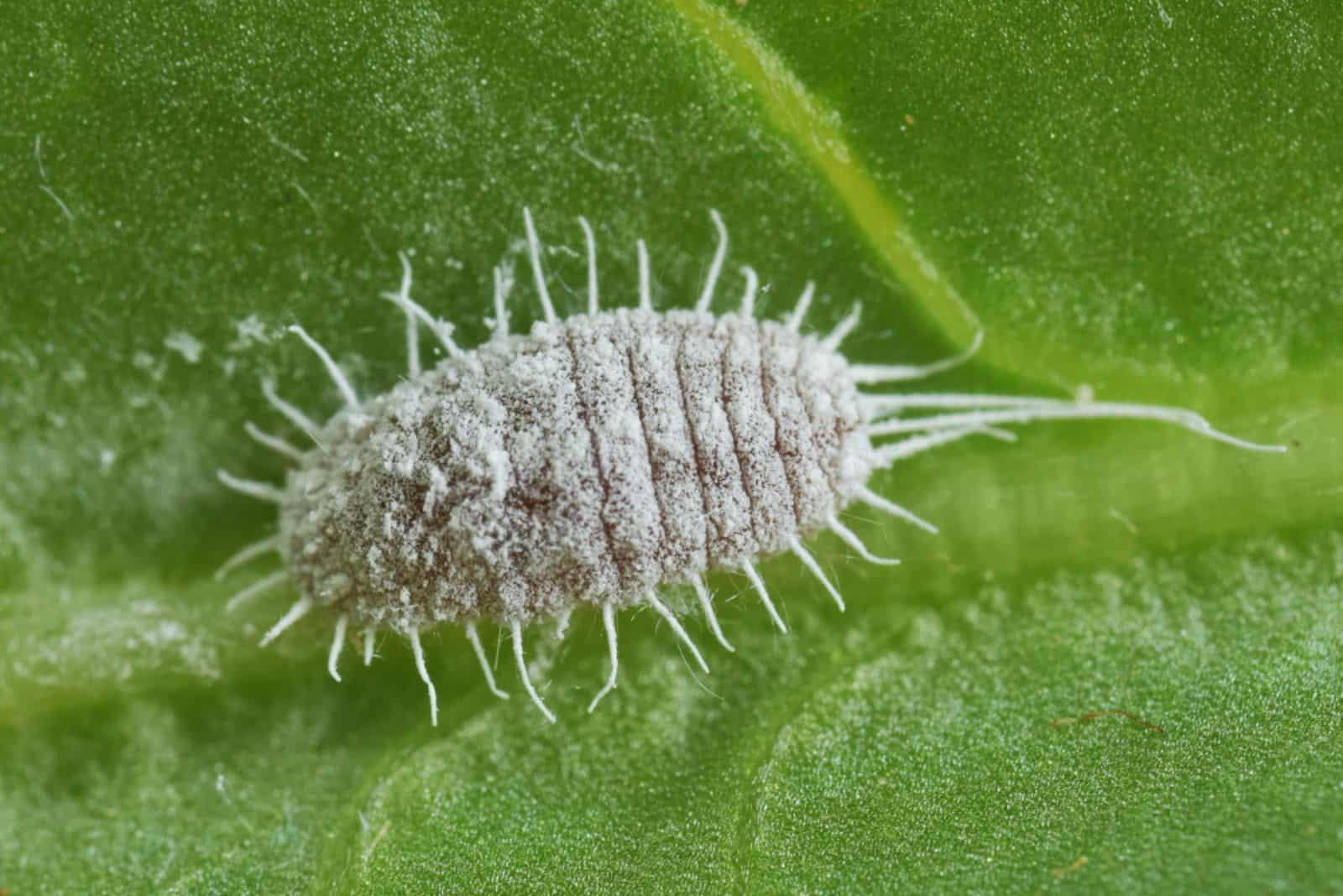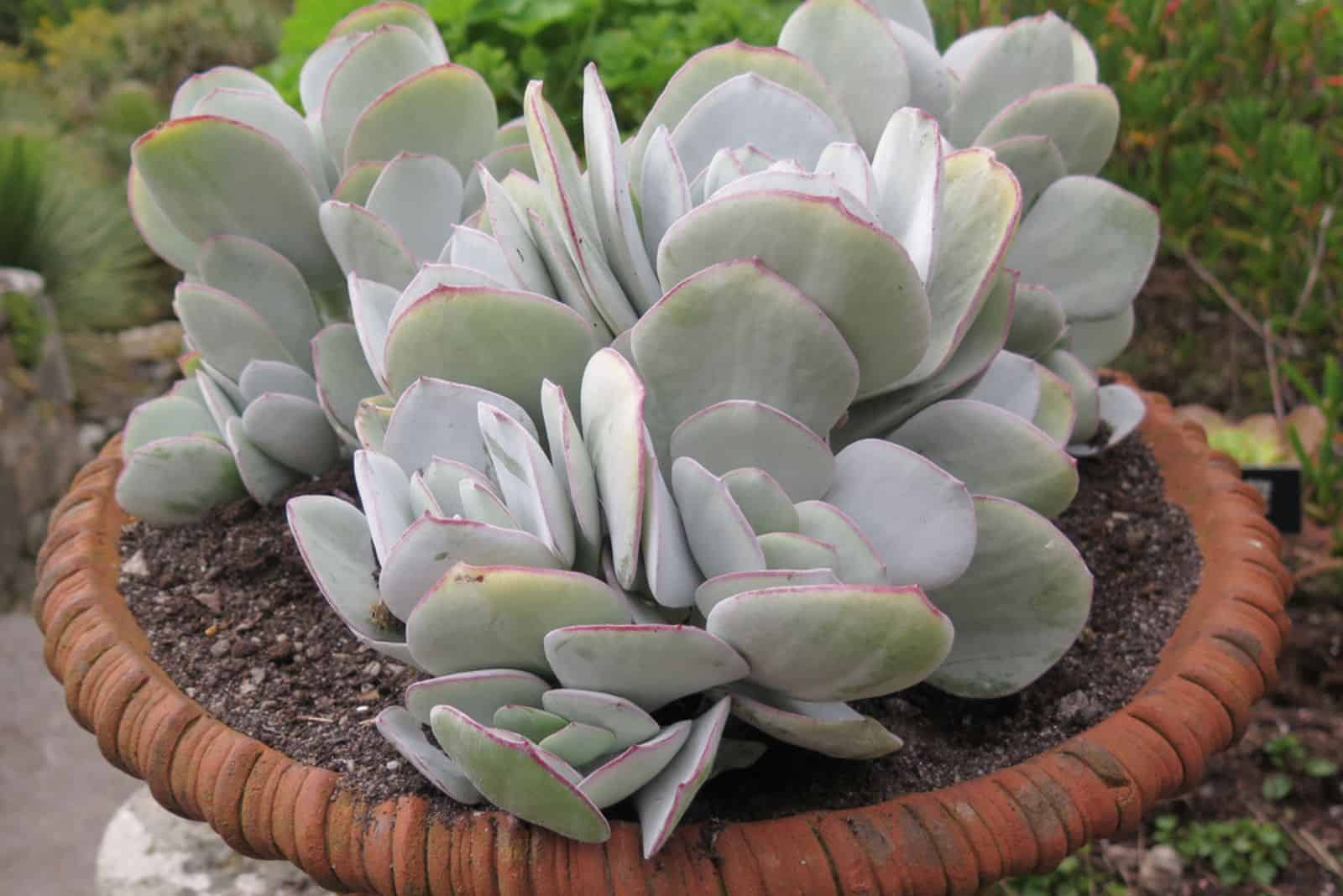You must admit that plant appearance isn’t the only thing that can make us want to buy one. If the plant has an interesting and unusual name, then it ranks better on my plants-to-buy list.
One such plant is the Silver jade, scientifically known as the Crassula Arborescens.
The term “silver” in the name stands for a reason, so if you want to learn more about this plant, you are in the right place.
In this article, I’ll tell you more about the features of this Crassula plant, as well as its care requirements and propagation methods. I’ll also tell you about issues you may encounter and how to deal with them efficiently.
Let’s learn some basic information about the arborescens species:
[table id=636 /]
Let’s get started!
Crassula Arborescens: Main Features
This Crassula species comes under many names, such as Chinese jade, Silver dollar, and Silver dollar jade.
It belongs to the Crassula genus, just like the perforata or ovata species (e.g. Crassula ovata Ogre’s Ear).
The Silver jade features stunning bluish- and grayish-green foliage with magenta margins. You’ll also notice tiny maroon speckles on the upper side of the leaves. Arborescens leaves are fleshy and have an elliptical shape.
This is a multi-stemmed plant that grows really slowly even in perfect conditions. The Silver dollar plant rarely exceeds 4 feet in height and width.
The Chinese jade succulent produces star-shaped blossoms that come in pink or white; unfortunately, you won’t see the flowers if you grow the plant indoors.
Size, low care requirements, and, of course, its beautiful appearance have made the Crassula arborescens one of the most common succulents grown as a houseplant.
You can also cultivate it outdoors if you live in USDA hardiness zones 9-11; it’s a perfect plant for borders, patios, and rocky gardens.
How To Care For The Silver Jade Plant
Just like its succulent cousins, this silverish-bluish treasure isn’t finicky about growing conditions; they’re pretty much like all succulent plants.
Let’s learn how to keep your Silver dollar plant happy and healthy!
Light Requirements
If you grow the Chinese jade plant indoors, you can either put it in a place that receives bright indirect light throughout the day or a spot that receives about 6 hours of direct sunlight each day.
This means that this plant is perfect to put near windows with southern exposure.
If you live in a warmer climate and want to cultivate a Silver jade plant outdoors, find a spot that receives direct sun, but only in the mornings. For the rest of the day, this jade plant needs to be in partial shade; otherwise the leaves will be scalded by direct sunlight.
Watering Schedule
The fact that the Silver jade is a succulent tells us about the watering needs of the plant. It isn’t a heavy drinker, and too much water can have fatal consequences.
The best way to avoid any watering issues is to give your Chinese jade plant a good soak, let it drain well, and water it again when the growing medium dries out completely (drainage holes in the bottom of the pot will help with this).
It will need even less water during the colder months; a combination of moist soil and low temperatures typically leads to root rot disease. The Chinese jade succulent is semi-dormant during winter, which means it shows little to no growth and needs less watering.
When the growing season starts (spring), expect a minor increase in watering requirements.
Temperature & Humidity
Silver jade plants are native to warmer climates and will grow best in temperatures ranging from 65 to 75 degrees Fahrenheit.
It can tolerate temperatures down to 30 degrees, but anything lower will definitely kill it.
As mentioned, the Chinese jade can be cultivated outdoors in hardiness zones 9-11 all year. If you live in a colder climate, you can keep your Silver dollar plant outdoors during the warmer months, and bring it indoors when temperatures drop back down.
When it comes to the humidity requirements of the Silver dollar plant, it will grow well in lower humidity levels (30%), and as long as humidity doesn’t exceed 50% your plant will be happy and healthy.
Soil Mix
Poor, loamy, and sandy soil types will work just fine for this Crassula plant. Compact soil types retain more moisture, which this Jade plant can’t tolerate.
You can make a potting mix for your Crassula arborescens plant by combining potting soil with well-draining ingredients such as perlite and orchid bark.
If you are a beginner, you can purchase substrates for succulent plants in nurseries or online.
Fertilizing Schedule
Another fantastic feature of the Silver jade plant is that it isn’t a heavy feeder. Actually, it will grow well if you don’t fertilize it at all.
You can add small amounts of organic matter into the growing substrate when potting/repotting, or apply organic fertilizer suitable for succulent plants. Never fertilize your arborescens plant during winter.
Repotting
The Crassula arborescens is a slow-growing plant, so you don’t need to repot it often. If your green buddy is healthy, wait until it outgrows its pot, i.e., when the roots start poking through potholes.
The only thing to pay attention to when repotting is to use a pot with holes in the bottom.
Of course, the substrate needs to be free-draining and not too compact in order to prevent the accumulation of excess water.
How To Propagate The Silver Dollar Plant
There are three methods you can use to propagate this magnificent plant. Leaf cutting and stem cutting propagation will most likely have a positive outcome, whereas the seed propagation method can be tricky and has a low success rate.
Let’s look at how to get new Crassula arborescens plants through leaf/stem cuttings:.
1. Inspect your Chinese jade plant and cut off a healthy leaf with clean scissors.
2. Put the leaf in a warm place in your home for a few days. This will allow the callus to develop over the cut part of the Silver jade leaf. It will enhance root formation and help it avoid rotting.
3. You can brush the cut end that formed the callus with a powdered rooting hormone (optional).
4. Insert the calloused end of the leaf into a tiny container filled with a moderately moist growing substrate. Don’t irrigate at this point.
5. Place the container somewhere warm and make sure your Crassula cutting receives enough bright indirect sunlight.
6. The leaf generally takes a week or two to develop new roots. It is natural for the leaf to shrink slightly when forming roots (don’t panic).
7. Mist the soil when it dries out fully, and as soon as the roots form (tug the cutting now and then to check) you can transplant the cutting into a container or plant it directly in the ground outdoors.
If you prefer the stem cutting propagation method, make sure you take a healthy 3 inch long cutting with two pairs of leaves (the more, the better). Once you have the cutting, follow the same procedure as for the propagation method described above.
Common Issues With The Chinese Jade Plant
The Chinese jade plant is one of the most low-maintenance plants you’ll come across. Generally speaking, this is a problem-free plant, though there are some issues you may have to face.
Let’s see what can go wrong.
Pests And Diseases
There’s no houseplant that will stay immune to pest problems. Some may attract these creatures more than others, so if one of your green buddies has pest problems, the other ones will most likely suffer before long.
I call mealybugs, spider mites, and aphids regular pests, and I can’t think of a grower that hasn’t had to deal with these guys on their plants.
If you notice your Silver jade plant has some pests on the leaves, treat them immediately by rubbing the leaves with neem oil.
The most common disease that afflicts the Chinese jade succulent is root rot. This is actually the main cause of dying succulents.
Overwatering is the culprit for this disease, so if your Silver dollar plant has mushy soil, smells bad, and the foliage is discolored (yellow/brown), you need to take it out of its container and check the root system.
Repotting is the best thing you can do to fix this issue; pay attention to how and when you water this fascinating succulent. Remember, completely dry soil is a signal your Crassula needs irrigation!
FAQs
Is the Silver jade plant poisonous?
Unfortunately, yes, the Crassula arborescens is a mildly toxic plant, so you should keep it away from small children and pets.
Is the Silver jade plant rare?
The Silver dollar jade plant can be called rare, and you won’t see it in every plant collection. But, its popularity is increasing due to its unique appearance and low care requirements.
Wrapping Up
Most growers know about the Crassula ovata succulent plant, and it’s frequently cultivated indoors.
The Crassula arborescens is an uncommon plant, but it definitely looks as pretty as its abovementioned cousin (maybe even prettier).
Just give your arborescens plant a lot of light and water when the growing substrate dries out fully!
Until next time!

